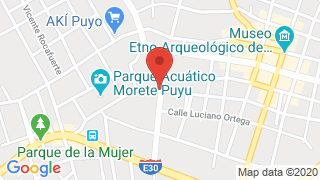Pastaza Province




Pastaza Cradle of the 7 Amazonian Indigenous Nationalities
The jungles of this vast province are the cradle of 7 indigenous nationalities: the Amazonian Quichuas, the Andoas, the Záparas, the Huoranis, the Achuar, the Shiwiar and the Shuar. These communities have inhabited the Amazon rainforest for millennia. Their customs, ways of life, their gastronomy, music and worldview, in addition to their varied languages, make them true anthropological attractions for both researchers and national and foreign tourists.
Pastaza tourist attractions
- Llandia Waterfall: The entrance to the waterfall is by a third-order highway, then continue along a palisade path.
- Royal Exotic Bird Park: It is a tourist attraction for the observation and reproduction of several species of birds of beautiful colors, shapes and sizes.
- Calum-Calum Waterfall: During the tour you will enter through dense vegetation, along the way you can see how giant trees make their way to the sides of the road.
- Tree House: 11 floors built on the basis of a giant 200-year-old Matapalo tree.
- Shiwiar: They are an American Indian people, who speak a Jivaroan language, they have been the traditional inhabitants of the territories located southeast of Pastaza.
- Tropical Forest Reserve Hello Life: It is a private tropical forest nature reserve, it has 225 ha. The environment of the place is unique and emphasis is given to the environment protection and conservation.
Pastaza Weather
Its climate is hot and humid. Its average temperature is between 18 ° C and 25 ° C. Like most eastern provinces it has a humid tropical climate.
Pastaza province Gastronomy
Pastaza, entrance to the Yasuni, offers a varied and select variety of dishes and gastronomic products to delight your taste.
In restaurants of Puyo city and the surroundings within the Province of Pastaza, you can taste:
- Chontacuros: worms of about 6cm in length, the pampering that is extracted from the Chonta plant, these worms are known to have healing properties for the stomach and lungs, their taste is unique and delicious. You can taste: fried, cooked, maito, skewer or if you are risky raw.
- Tilapia: fish known throughout the Amazon region and cultivated by the residents of Pastaza, easy to grow and taste delicious, can be eaten in maito, (MAITO: tilapia is wrapped in vijao leaves, usually 3- 5 leaves, and tie the ends of the wrap and then put it on the charcoal and after 10-15 minutes it will be cooked, no seasonings are added only salt and palm if you want to.) You can also taste this fried fish, Stew, or sweat.
- Chicha de Yuca: this ancestral drink is consumed by the native inhabitants of indigenous communities that exist throughout the Pastaza Province. It is made from Yuca, and can quench thirst and hunger.
- Cane juice: prepared with sugarcane grown in the province, sweet and refreshing.
- Guayusa Tea: Drink consumed ancestral with healing and energizing properties consumed in ceremonies and at all times by the natives of the area.
Pastaza culture and traditions
Their customs are almost similar to those of the Shuar but they differ greatly in the way of practicing them. In ancient times the achuar was very attached to their traditions that at the beginning the missionaries had difficulties. The practice of polygamy, the painting of war, the discourse of war (Aujmamu), and the traditional shot of guayusa (Wayus), rituals, chicha of yucca and chonta, and we paint our body and face to identify ourselves as Achuar , Not doing so is a sign of contempt. The head of the house is the one who starts the ceremony and invites others to eat, thus making the act a daily ritual.
Pastaza Rites and Festivals
- Chonta Feast: it is celebrated every year in the month of August for the prosperity achieved throughout this time, in terms of planting, harvesting and the life cycle of people.
- Sacred Waterfall Rite: it has a deep significance in the Shuar people, through this rite they ask the supreme being Arutam, to grant them power, positive energy for their future survival.
- Snake Rite Celebration: This cultural practice is carried out only when there is a snake bite, becoming a ritual that has as its purpose, to pay homage for the salvation of the death of the injured and to scare away the snakes and avoid future bites
- Uwishin intervention: a person knew that it is dedicated to healing the sick and caring for the members that make up the community. By no means the true Uwishin causes harm to others, except those who exercise it for revenge on conflicts generated by wars or family discords. The Uwishim also plays the role of identifying people who cause harm and instructs them to prevent themselves from their enemies.
- The Ayahuasca Festival: it is celebrated in the month of January with the walk to the waterfalls and sacred mountains.
Pastaza province History
At the beginning of the 19th century, the Canelos region was integrated into the territory of the Corregimiento de Ambato, jurisdiction established in 1797 within the Presidency of Quito, which at that time was part of the Viceroyalty of New Granada. In 1802, King Carlos IV of Spain issued the erection card of the Bishopric of Mainas, which should also cover the Canelos Mission. This Certificate, which was only of an ecclesiastical nature, had, however, dire consequences in subsequent border disputes with Peru. On June 23, 1824, the Senate and the House of Representatives of the Republic of Colombia issued a Territorial Division Law that organized the territory of Gran Colombia into twelve departments. Each Department comprised provinces and cantons. The Pastaza area corresponded to the Macas canton of the Province of Chimborazo in Department No. 10.

Publicado en:
Publicado por:



